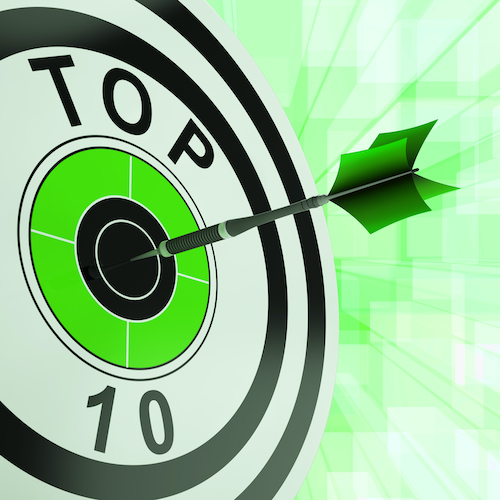 As the world bids good riddance to 2020, cursed as it has been by the COVID-19 pandemic and its attendant shutdown of major swathes of the globe’s economy, this list of the Top 10 Patents of 2020 hopefully serves as a reminder that—although the world has missed out on concerts and sporting events aplenty—this year has not been a wasted opportunity for inventors. The world of patent law may be steeped in the tradition of legal precedent but the technologies covered by patents themselves are forward-looking, promising days of driverless vehicle commutes, personalized cancer treatments and fewer awkward moments on Zoom calls. This list does not purport to be an authoritative collection of the most economically valuable technologies protected by patents during 2020, but it offers an honest assessment of technologies that may provide an array of social benefits to consumers long after we ring out the current year.
As the world bids good riddance to 2020, cursed as it has been by the COVID-19 pandemic and its attendant shutdown of major swathes of the globe’s economy, this list of the Top 10 Patents of 2020 hopefully serves as a reminder that—although the world has missed out on concerts and sporting events aplenty—this year has not been a wasted opportunity for inventors. The world of patent law may be steeped in the tradition of legal precedent but the technologies covered by patents themselves are forward-looking, promising days of driverless vehicle commutes, personalized cancer treatments and fewer awkward moments on Zoom calls. This list does not purport to be an authoritative collection of the most economically valuable technologies protected by patents during 2020, but it offers an honest assessment of technologies that may provide an array of social benefits to consumers long after we ring out the current year.
Happy New Year, everyone; here’s to a much brighter 2021!
U.S. Patent No. 10834456, Intelligent Masking of Non-Verbal Cues During a Video Communication
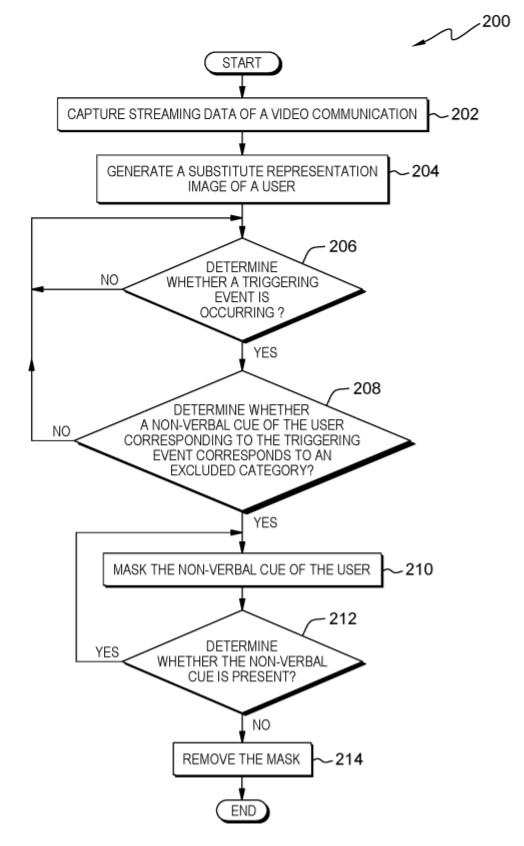 With 9,477 U.S. patents received during 2019, International Business Machines (IBM) continues to be the top R&D firm in the U.S. patent system for more than two decades running. A search of the USPTO’s Patent Full-Text and Image Database shows that, through December 17, IBM had received 8,974 patents through that point of 2020, so the company’s patent filing activity has been chugging along quite well during the pandemic.
With 9,477 U.S. patents received during 2019, International Business Machines (IBM) continues to be the top R&D firm in the U.S. patent system for more than two decades running. A search of the USPTO’s Patent Full-Text and Image Database shows that, through December 17, IBM had received 8,974 patents through that point of 2020, so the company’s patent filing activity has been chugging along quite well during the pandemic.
While there are certainly many novel IBM technologies that we could feature here, the ‘456 patent covers a technology that could lead to fewer awkward moments on video calls. Claim 1 covers a method comprising identifying a user within streaming video data; determining a non-verbal cue triggering event; identifying the cue in response to the triggering event; determining whether the cue corresponds to an excluded category of actions; and masking the excluded action by overlaying a substitute representation of the user over the user in the streaming video data. In one embodiment discussed by the ‘456 patent’s specification, the claimed program could detect a user making a gesture to lower the volume, triggering the program into masking any ambient noise incoming from other user microphones.
U.S. Patent No. 10726640, Facilitation of Smart Communications Hub to Support Driverless Vehicles in 5G Networks or Other Next Generation Networks
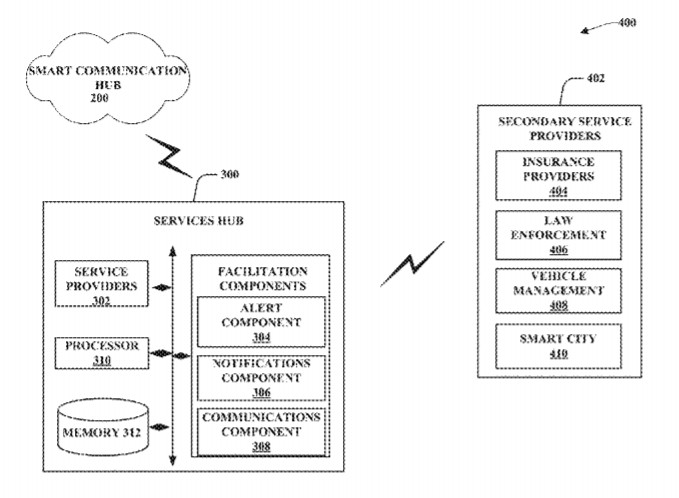 The promise of 5G mobile networks isn’t so much higher speeds than current 4G networks but higher capacity, enabling much more complex machine-to-machine communications such as the technology covered by the ‘640 patent, issued this July to AT&T Mobility II. Claim 1 covers a method comprising receiving at a first network device sensor data from a first vehicle; sending the sensor data to a second network device; receiving data representative of an action to be taken; and sending the action data to the sensor to facilitate performance of the action. Action data comprises data to alter a vehicle’s route to reduce traffic for emergency services vehicles as well as data on emissions status.
The promise of 5G mobile networks isn’t so much higher speeds than current 4G networks but higher capacity, enabling much more complex machine-to-machine communications such as the technology covered by the ‘640 patent, issued this July to AT&T Mobility II. Claim 1 covers a method comprising receiving at a first network device sensor data from a first vehicle; sending the sensor data to a second network device; receiving data representative of an action to be taken; and sending the action data to the sensor to facilitate performance of the action. Action data comprises data to alter a vehicle’s route to reduce traffic for emergency services vehicles as well as data on emissions status.
As the ‘640 patent’s specification notes, the claimed method would be implemented via a smart communications hub supporting mobile applications, micro-services like updates to brake or gas sensors, and even smart city infrastructure allowing citizens to access smart city data. Along with facilitating route alterations for driverless vehicles, the smart communications hub would also facilitate orders for driverless vehicles and provide a portal for collision repair and insurance providers. Autonomous vehicle technologies are heavily reliant on sensor technologies so if AT&T can build a market-leading vehicle communications platform, we could be seeing the telecommunications giant take an interesting leap into transportation.
U.S. Patent No. 10659477, Method and System for Vehicle Cyber-Attack Event Detection
 The downside to the increasing digitization of our daily lives is that the presence of more technologies for machine communications increases the risk that those technologies could be exploited by malicious actors. Driverless cars are certainly convenient but car owners will want to know that they can ride around without their car being hacked, exposing passengers to the threat of injury or worse. To that end, The Boeing Company has invented a system for detecting cyber attacks that can be implemented on a wide range of vehicles, including aircraft, automobiles and even maritime vehicles.
The downside to the increasing digitization of our daily lives is that the presence of more technologies for machine communications increases the risk that those technologies could be exploited by malicious actors. Driverless cars are certainly convenient but car owners will want to know that they can ride around without their car being hacked, exposing passengers to the threat of injury or worse. To that end, The Boeing Company has invented a system for detecting cyber attacks that can be implemented on a wide range of vehicles, including aircraft, automobiles and even maritime vehicles.
Claim 1 of Boeing’s ‘477 patent covers a vehicle cyber-attack detection system comprising a first tier security module receiving system log data from an onboard system of a vehicle, the security module having a cyber-attack anomaly detection module configured to identify a cyber-attack based on system entropy measurements, generate a time series of overlapping windowed system log data and extract features from system log data from a window. A second cyber-attack anomaly detection module including a deep learning component identifies a second cyber-attack based on classification of the extracted features, and a cyber-attack alert module generating notifications of the cyber-attacks through a user interface. The invention covered by the ‘477 patent is intended to address shortcomings in the use of offline and threshold-based analytic tools, which have little effectiveness against zero-day cyber-attacks and previously unseen attacks.
U.S. Patent No. 10639792, Deep Machine Learning Methods and Apparatus for Robotic Grasping
While our modern world continues to lack the kind of robotic androids made famous by mid-20th century science fiction, tech developers like Google are applying current machine learning techniques to solve many of the complex issues posed by the autonomous nature of robotics. The ‘792 patent, issued to Google in May, claims a system comprising a vision sensor viewing a robot’s environment; a semantic grasping model stored in non-transitory computer readable media; and then a processor configured to identify captured images, generate a probability measure of a successful grasp of a viewed object as well as spatial transformation parameters indicating a location, apply the spatial transformation parameters as input to a deep neural network, generate an additional measure indicating whether a desired object semantic figure is present, generate an end effector command based on the measures, and provide the command to actuators of the robot.
model stored in non-transitory computer readable media; and then a processor configured to identify captured images, generate a probability measure of a successful grasp of a viewed object as well as spatial transformation parameters indicating a location, apply the spatial transformation parameters as input to a deep neural network, generate an additional measure indicating whether a desired object semantic figure is present, generate an end effector command based on the measures, and provide the command to actuators of the robot.
The specification of Google’s ‘792 patent discusses the use of the invention in training a grasp deep neural network, also referred to as a convolutional neural network, to predict the probability of a successful robotic grasp. In preferred embodiments, the deep neural network of this technology would only enable the generation of an end effector command if the likelihood of a successful grasp satisfies a threshold. Such networks could also enable application interfaces through which human users could provide input directing the robot to interact with a particular object within its environment. As diagrams attached to the ‘792 patent show, the technology could enable robots to successfully grasp items as delicate as wooden pencils or a pair of eyeglasses.
U.S. Patent No. 10803714, System and Method for Visualizing, Tracking and Maintaining Social Distancing
 The phrase “social distancing” became a major part of the 2020 zeitgeist thanks to the many strains to society caused by the COVID-19 pandemic. Only one patent issued in 2020 makes reference of social distancing in the pandemic context, which isn’t that surprising given the long path that many patent applications take from filing to issuance. Filed this June and issued this October to solo inventor Rajeev Khera of Orlando, FL, the ‘714 patent claims a system comprising a visible boundary generating device that includes a lighting unit within a main body and a controller in communication with the lighting unit, and a social distancing application configured to remotely control an operation of the visible boundary generating device.
The phrase “social distancing” became a major part of the 2020 zeitgeist thanks to the many strains to society caused by the COVID-19 pandemic. Only one patent issued in 2020 makes reference of social distancing in the pandemic context, which isn’t that surprising given the long path that many patent applications take from filing to issuance. Filed this June and issued this October to solo inventor Rajeev Khera of Orlando, FL, the ‘714 patent claims a system comprising a visible boundary generating device that includes a lighting unit within a main body and a controller in communication with the lighting unit, and a social distancing application configured to remotely control an operation of the visible boundary generating device.
As the ‘714 patent’s specification notes, one main reason why social distancing efforts often fail in group settings is because there is no easy way for people to immediately realize that they are too close together. While many stores have implemented signs and other visual cues to maintain spacing, such solutions provide no ability to track customer traffic to identify instances of overcrowding. The social distancing application of this invention could be executed on a smartphone to generate a visible zone of colored light surrounding a user with a radius conforming to a specified social distance.
U.S. Patent No. 10845336, Electrochemical Approach for COVID-19 Detection
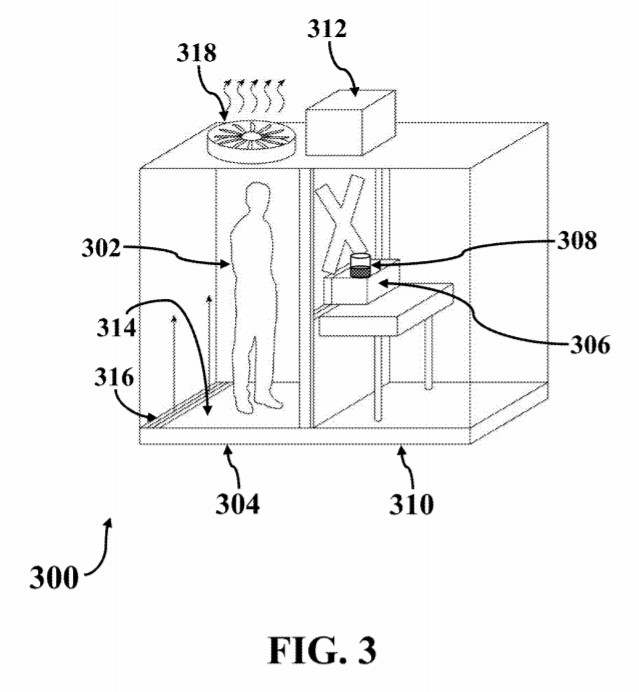 Similar to the social distancing patent above, only one patent has been issued by the USPTO that directly references COVID-19 in the patent’s title. Issued in November to a group of Iranian inventors and listing Mohammad Abdolahad of Tehran as lead inventor, Claim 1 of the ‘336 patent covers a method for diagnosing COVID-19 infection by acquiring a sputum sample of a person; measuring a level of reactive oxygen species (ROS) in the sample by recording a cyclic voltammetry (CV) pattern from the sample and measuring a current peak of the recorded CV pattern; and detecting COVID-19 infection status based on the measured level of ROS by determining that the measured current peak is within a certain range of current peaks.
Similar to the social distancing patent above, only one patent has been issued by the USPTO that directly references COVID-19 in the patent’s title. Issued in November to a group of Iranian inventors and listing Mohammad Abdolahad of Tehran as lead inventor, Claim 1 of the ‘336 patent covers a method for diagnosing COVID-19 infection by acquiring a sputum sample of a person; measuring a level of reactive oxygen species (ROS) in the sample by recording a cyclic voltammetry (CV) pattern from the sample and measuring a current peak of the recorded CV pattern; and detecting COVID-19 infection status based on the measured level of ROS by determining that the measured current peak is within a certain range of current peaks.
The invention covered by the ‘336 patent is intended to serve as a diagnostic test for fast, reliable diagnosing of COVID-19 infection which is both simple to use and cost-effective as there is no need for expensive chemical reagents. The electrochemical approach utilized by this technology leverages the ability to trace underlying molecular mechanisms such as mitochondrial ROS overproduction. Further, the technology is useful in diagnosing COVID-19 infection in people who have underlying respiratory issues such as asthma or cystic fibrosis.
U.S. Patent No. 10863939, Emotion Estimating Method, Emotion Estimating Apparatus, and Recording Medium Storing Program
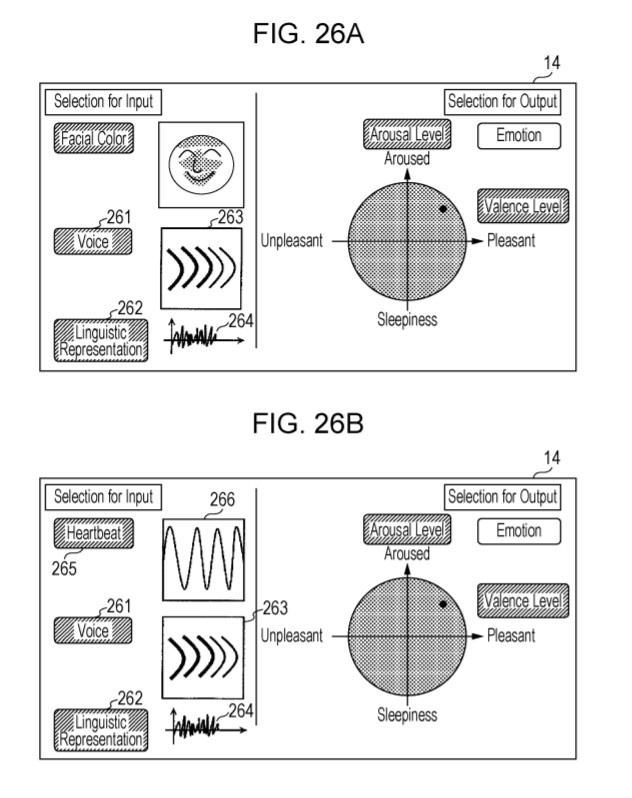 The field of biometrics has been able to flourish with the development of sensor technologies that can turn biological information into machine-readable data. Forms of human expression and subjective viewpoints have been more difficult to turn into useful data points, although the ‘939 patent, issued to Panasonic IP Corporation of America this December, covers a technology that improves the prior art by enabling the estimation of emotional states felt by people, such as happiness or surprise.
The field of biometrics has been able to flourish with the development of sensor technologies that can turn biological information into machine-readable data. Forms of human expression and subjective viewpoints have been more difficult to turn into useful data points, although the ‘939 patent, issued to Panasonic IP Corporation of America this December, covers a technology that improves the prior art by enabling the estimation of emotional states felt by people, such as happiness or surprise.
Claim 1 of Panasonic’s ‘939 patent covers an emotion estimating method comprising acquiring physiology and non-physiology data from a subject; calculating the subject’s degree of arousal and valence based on differences between the acquired data and predetermined reference values; estimating the subject’s emotion based on a predetermined association of people’s emotions with the calculated degrees of arousal and valence; and controlling an emotion estimating apparatus to display a plurality of images indicating estimated emotions. The method also enables an input interface on the emotion estimating apparatus for the selection of one of the candidate emotion images displayed. Along with facial expressions, the invention could acquire data from heart rate, blood pressure or even brain waves to aid in the estimation of the subject’s emotion.
U.S. Patent No. 10713963: Managing Lifelong Learner Events on a Blockchain
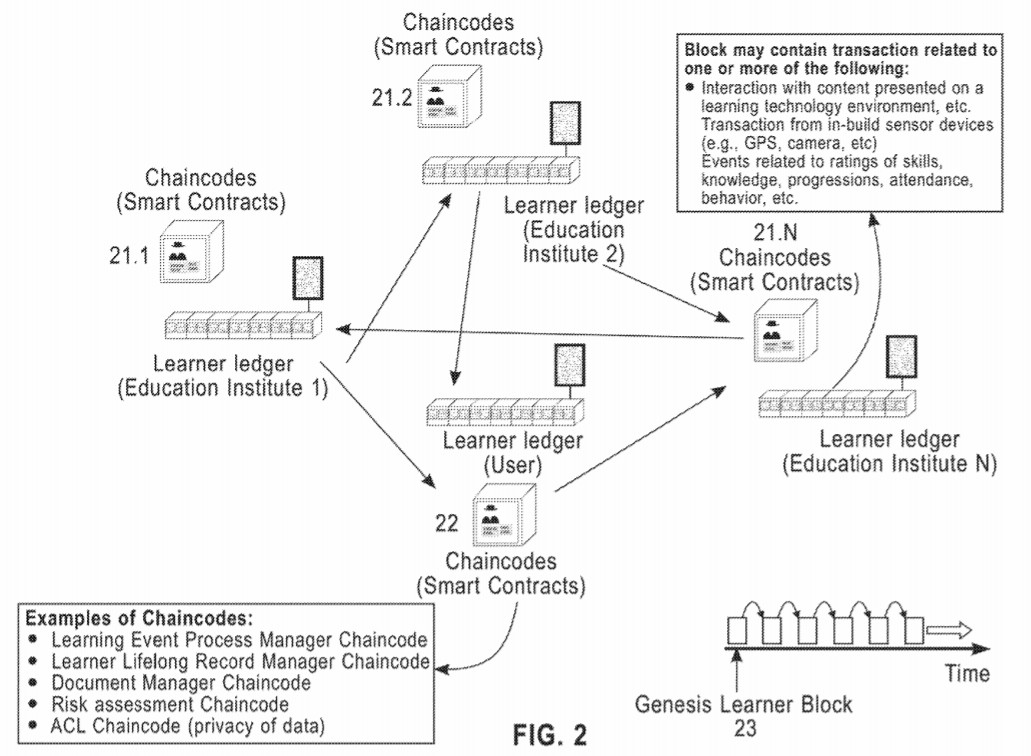 With Bitcoin surging to new highs to close out 2020, blockchain technologies continue to be a major tech trend with great potential despite few successful current implementations. However, the method of managing lifelong learner events protected by the ‘963 patent, another IBM patent, is representative of the many diverse applications for distributed ledger technologies that ensure low risks of data tampering. Claim 1 covers a method comprising the steps of detecting a learner event; determining a learner’s risk of failing a course; determining parameters based on a risk level; determining the value of parameters from the learner-related event; generating a list of transactions related to the event; and validating the transaction list using distributed peer-to-peer devices running chaincodes related to the lifelong learner event management.
With Bitcoin surging to new highs to close out 2020, blockchain technologies continue to be a major tech trend with great potential despite few successful current implementations. However, the method of managing lifelong learner events protected by the ‘963 patent, another IBM patent, is representative of the many diverse applications for distributed ledger technologies that ensure low risks of data tampering. Claim 1 covers a method comprising the steps of detecting a learner event; determining a learner’s risk of failing a course; determining parameters based on a risk level; determining the value of parameters from the learner-related event; generating a list of transactions related to the event; and validating the transaction list using distributed peer-to-peer devices running chaincodes related to the lifelong learner event management.
The technology covered by the ‘963 patent is expected to enable personalized education approaches by consolidating data from disparate sources to foster student-teacher engagement. Currently, such engagement relies mainly on exam results and homework scores, but IBM’s system could provide additional feedback from student attention states, quiz assessments and learner interactions with class content. Such a system would be able to authenticate important skills and behaviors acquired during a person’s life and provide that data in a format that is easy to share and verify.
U.S. Patent No. 10762304, Applied Artificial Intelligence Technology for Performing Natural Language Generation (NLG) Using Composable Communication Goals and Ontologies to Generate Narrative Stories
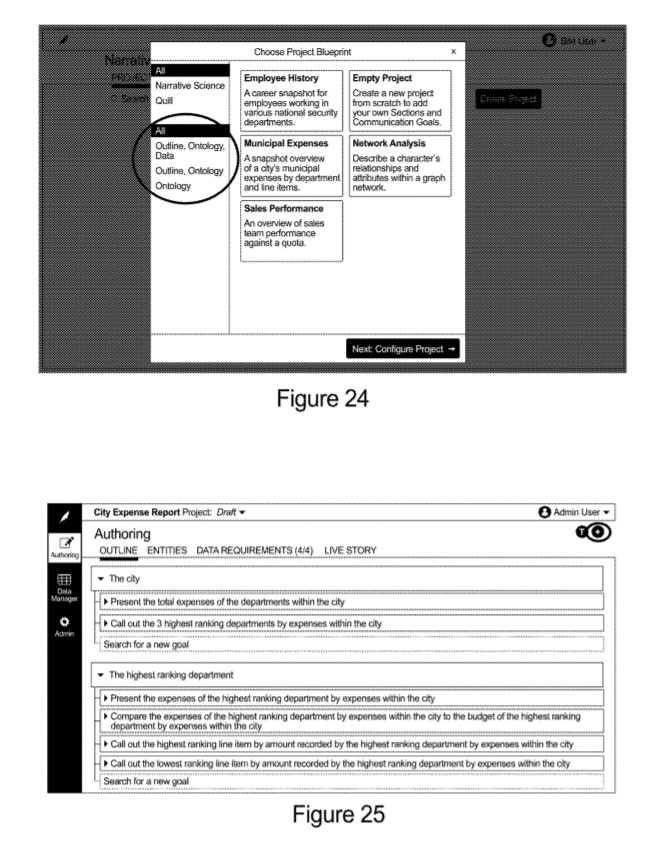 Exactly how much manual productivity and creativity of humans can be obviated by artificial intelligence? To judge by the technology covered by the ‘304 patent assigned in September to Narrative Science of Chicago, IL, even the next great American novel may have more AI than Grisham or Stephen King in the outline. According to the ‘304 patent’s specification, the technology allows a user to quickly structure story outlines using natural language generation (NLG) technologies in such a way that a user doesn’t need to directly author any computer code.
Exactly how much manual productivity and creativity of humans can be obviated by artificial intelligence? To judge by the technology covered by the ‘304 patent assigned in September to Narrative Science of Chicago, IL, even the next great American novel may have more AI than Grisham or Stephen King in the outline. According to the ‘304 patent’s specification, the technology allows a user to quickly structure story outlines using natural language generation (NLG) technologies in such a way that a user doesn’t need to directly author any computer code.
Claim 1 of the ‘304 patent covers a method of applying AI to generate a narrative story according to a narrative generation process in response to user input by composing a communication goal statement in response to a user input, the statement including a specified parameter within an ontology and having an association with a set of narrative analytics determining informational content from structured source data for inclusion in the narrative story. The invention further uses a processor executing narrative analytics program code to determine content for inclusion in the narrative story that satisfies a communication goal identified in the parameterized statement. The patent further discloses editing capabilities by which a user can edit text in the narrative story which in turn results in modifications to the ontology and story outline from which the story was generated. Diagrams attached to the ‘304 patent show embodiments of the invention for generating narrative stories in a business or municipal government context.
U.S. Patent No. 10600503, Systems Medicine Platform for Personalized Oncology
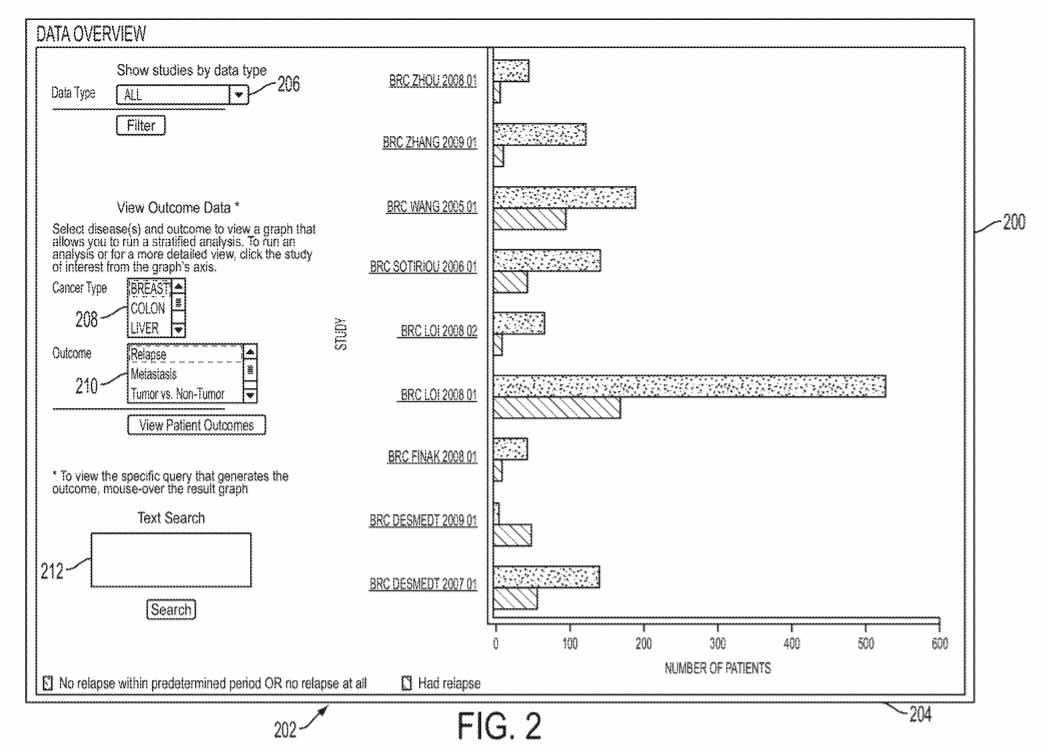 Forms of personalized medicine have been a major focus for medical R&D firms in recent years, especially when it comes to incredibly complex diseases like cancer where malignancy is often driven by many underlying biological processes that are unique to each patient. One of the more intriguing technologies offering hope in the fight against cancer that received patent protections in 2020 is the systems medicine platform for cancer covered by the ‘503 patent issued in March 2020 to a research team at Georgetown University.
Forms of personalized medicine have been a major focus for medical R&D firms in recent years, especially when it comes to incredibly complex diseases like cancer where malignancy is often driven by many underlying biological processes that are unique to each patient. One of the more intriguing technologies offering hope in the fight against cancer that received patent protections in 2020 is the systems medicine platform for cancer covered by the ‘503 patent issued in March 2020 to a research team at Georgetown University.
Claim 1 of Georgetown’s ‘503 patent covers a method for providing data relating to cancer by receiving raw mRNA expression data, metabolomics data, DNA copy number data and next-generation sequencing; normalizing the raw data through through background correction and other normalization techniques; storing the normalized data in a database correlating a plurality of data types to clinical outcomes; receiving a user query for data; performing the query through the normalized data; and outputting data comprised of a personalized clinical outcome with cytobands display and a heatmap view. The resulting invention allows clinicians to view integrated biomedical data from disparate sources which create petabytes of data and provides them with a feature-rich and sharable research infrastructure for mining and analyzing cancer patient data.
Image Source: Deposit Photos
Copyright: stuartmiles
Image ID: 22273619

![[IPWatchdog Logo]](https://ipwatchdog.com/wp-content/themes/IPWatchdog%20-%202023/assets/images/temp/logo-small@2x.png)

![[[Advertisement]]](https://ipwatchdog.com/wp-content/uploads/2023/01/2021-Patent-Practice-on-Demand-1.png)
![[Advertisement]](https://ipwatchdog.com/wp-content/uploads/2024/04/Patent-Litigation-Masters-2024-sidebar-early-bird-ends-Apr-21-last-chance-700x500-1.jpg)

![[Advertisement]](https://ipwatchdog.com/wp-content/uploads/2021/12/WEBINAR-336-x-280-px.png)
![[Advertisement]](https://ipwatchdog.com/wp-content/uploads/2021/12/2021-Patent-Practice-on-Demand-recorded-Feb-2021-336-x-280.jpg)
![[Advertisement]](https://ipwatchdog.com/wp-content/uploads/2021/12/Ad-4-The-Invent-Patent-System™.png)







Join the Discussion
One comment so far.
sarcastic
December 30, 2020 07:21 pmSadly most of these would be found invalid by the Federal Circuit under §101.
“Here, the ‘XXX patent recites the long-standing economic principle of maintaining social distance and is therefore abstract.
[half-page excerpt from ChargePoint]
At step two, the “visible boundary generating device,” “lighting unit,” “controller,” and “social distancing application” are merely generic and do not recite significantly more than an abstract idea.
[half-page excerpt from Dropbox]
Peace,
#FedCirc